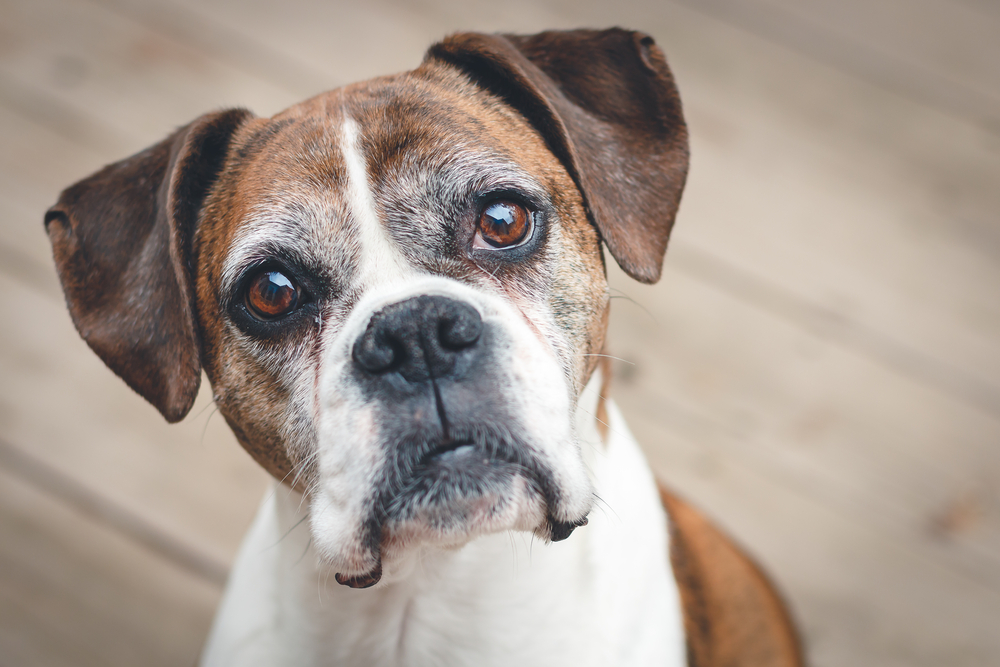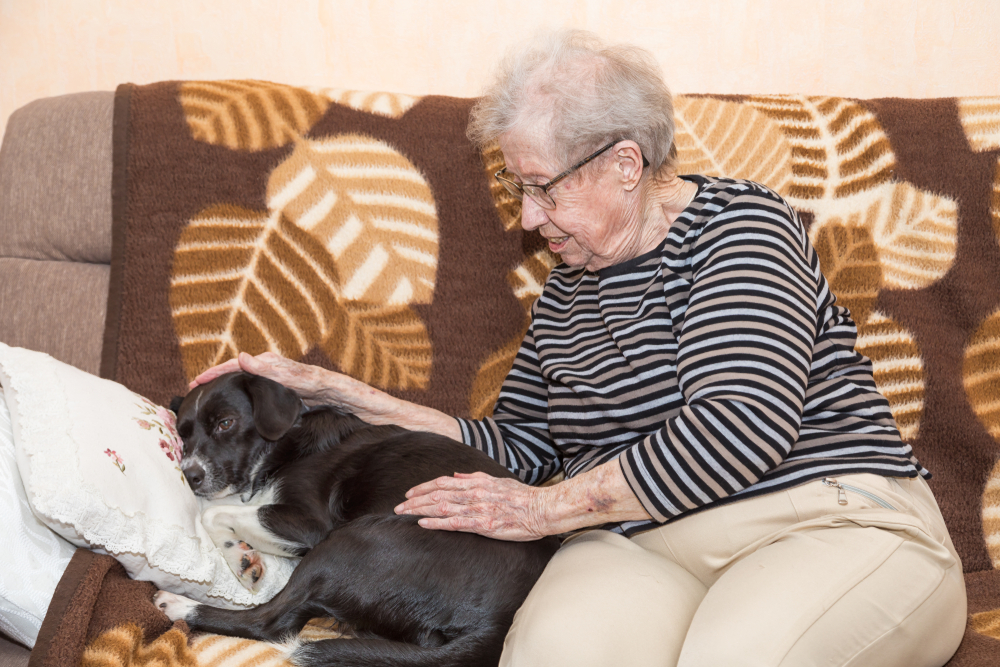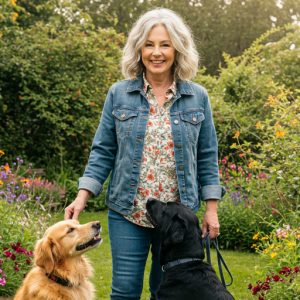One thing I can’t deal with in life is that a dog’s life is considerably shorter than ours. I feel that we never get enough time to spend with our loyal furry friends. I hope scientist can find a magic cure that will make dogs live longer, but until then, there are some things we can do to support senior dogs and extend their life expectancy.
My incredible dog, Luna, just turned seven this year, and my vet says this marks the start of her senior years. I’ve been researching the next stage in our lives and wanted to share what I’ve learned with you all. Hopefully, this article will help you better understand your senior dog’s needs and give you the tools to provide a longer, healthier, and happier life.

What is considered a senior dog?
Did you know that the age when dogs are considered seniors can vary by their breed? For instance, small dogs like Chihuahuas and Dachshunds often enjoy a longer lifespan, and they’re typically considered seniors when they reach about 11 years old. How amazing is that?
Medium-sized dogs, like Beagles and Bulldogs, usually become seniors between 8 and 10 years old. In contrast, giant breeds such as the gentle Great Dane have a shorter lifespan and may be considered seniors as early as 5 years old.
For mixed-breed dogs, the senior stage typically begins around 7 years of age. My dog, a mix of a terrier, a lab, and a German shepherd, is considered a senior dog at 7. My vet confirmed this according to this year’s annual check-up, which took into account her hip joints and the breeds in her mix. However, since it’s sometimes difficult to determine the exact mix of a mixed-breed dog, this estimate can vary. Your dog’s vet can provide a clearer idea of their expected lifespan and the stages they go through after a thorough exam.
It’s crucial to recognize when your dog enters its senior years, as its needs differ from those of puppies and adult dogs. For instance, senior dogs often require more frequent veterinary check-ups for health issues, have changing dietary needs, and may need regular medications or supplements to manage existing conditions.
What changes can I expect in my senior dog?
As your dog gracefully enters its senior years, you may notice some changes in its behavior and appearance that are important to keep an eye on. Being aware of what to expect can really help you support your furry friend. Plus, it will make it easier to determine whether these changes are simply a part of aging or if something else might be happening, in which case, you should definitely consider taking your dog in for a thorough check-up. Here are 10 usual changes you might notice about your dog:

1. Decreased Energy Levels
As our beloved dogs age, many pet owners notice a natural decline in their energy levels. Senior dogs often enjoy a more relaxed lifestyle, spending increased time resting or snoozing. This gentle reduction in energy can be influenced by various factors, such as the natural aging process, joint discomfort, or even underlying health issues like arthritis.
Owners may notice that their dogs seem a bit less excited about playtime or walks, often choosing shorter, more relaxed outings instead. It’s completely normal for our furry friends to slow down as they age, but it remains essential to encourage gentle exercise and provide some fun mental stimulation to keep their spirits high! Regular vet check-ups are also an excellent way to ensure we catch any underlying issues and keep our pets healthy and happy.
2. Joint and Mobility Issues
Joint and mobility issues are quite common in our beloved senior dogs, often stemming from age-related conditions like arthritis. As dogs grow older, the cartilage in their joints can wear down, leading to stiffness, discomfort, and a reduced range of motion. You might see them having a bit of trouble getting up, climbing stairs, or jumping onto their favorite spots. It’s not unusual to notice your dog hesitating during walks or being a little less enthusiastic about the physical activities they used to love.
For example, my beloved dog Luna was born with some issues with her hip joints. Our vet recommended daily exercise and special nutrition. Although Luna runs at least 3 miles a day with me or my husband, and I’m extremely careful with her nutrition, I’ve noticed lately that she has some posture problems. Managing these mobility issues often involves a combination of weight management, joint supplements, and anti-inflammatory medications prescribed by a veterinarian. There’s a chance that Luna’s hips will become extremely painful, and the doctor may recommend surgery, but until then, we’re doing our best to keep her pain-free and happy.
3. Changes in Weight
As dogs get older, they often experience changes in weight. Some may gain weight, while others may lose it. Weight gain can happen when dogs become less active and their metabolism slows down, so it’s crucial for owners to keep an eye on their dogs’ diet and exercise habits.
On the other hand, weight loss can be a sign of underlying health issues, like dental problems, stomach disorders, or long-term illnesses. It’s essential to regularly check your senior dog’s body condition and see a veterinarian if you notice any significant weight changes. Keeping your dog at a healthy weight is crucial for their overall health, as it can greatly affect their mobility, energy levels, and overall quality of life.

4. Dental Health Problems
Senior dogs often face major dental health challenges, as they’re more likely to develop issues like periodontal disease, tooth decay, and gum inflammation. As plaque and tartar build up over time, it can cause painful infections and even lead to tooth loss. Common signs of dental problems include bad breath, trouble eating, drooling, and swollen gums.
Regular dental exams and cleanings are key to preventing these issues and keeping your dog healthy overall. Giving your dog dental treats and toys can also help with oral hygiene. Taking care of your dog’s teeth proactively is important, as poor dental health can cause more serious problems that affect the heart and other organs.
5. Vision and Hearing Loss
As dogs get older, they often develop vision and hearing loss. When their eyesight declines, they may struggle to navigate familiar spaces, which can cause hesitation or anxiety in new surroundings. Some common signs include running into objects, having trouble seeing in dim light, or being reluctant to go outside.
Similarly, hearing loss can make it harder for your dog to respond to commands or sounds around them. This can impact their confidence and behavior. To help your aging pet, keep their environment consistent, use visual cues, and make sure they feel safe. Regular check-ups with your vet can help track and manage these changes in their senses.

6. Changes in Appetite
Older dogs often experience changes in appetite, which can be a sign of several health problems. Some senior dogs may lose interest in food, causing them to eat less, while others may become hungrier due to changes in their metabolism. Decreased appetite can be caused by dental issues, stomach problems, or long-term conditions like kidney disease.
On the other hand, some dogs may put on weight if their energy levels decline without a matching decrease in food intake. It’s crucial for pet owners to keep a close eye on their dog’s eating habits and consult with a vet if any major changes happen, as tackling these issues early is key to maintaining overall health and well-being.
7. Behavioral Changes
As dogs get older, they often experience behavioral changes that can be linked to their physical and emotional health. Senior dogs may become more anxious, irritable, or withdrawn due to age-related cognitive decline or discomfort from health issues. They may also develop new habits, such as increased barking, pacing, or changes in sleep patterns. Some may develop new fears or phobias, while others may become more clingy or seek more attention from their owners.
Pet owners must be patient and understanding during this period, offering a stable environment and taking part in gentle activities that can help stimulate their minds and provide a sense of security.
8. Increased Thirst and Urination
Older dogs often experience increased thirst and urination, which can be a sign of age-related health problems. As dogs get older, their kidneys may not work as well, causing them to produce more urine and drink more water. This can be a symptom of conditions like diabetes, kidney disease, or urinary tract infections.
As dogs age, their owners often notice they need to urinate more often, both inside and outside. Keeping a close eye on these changes is crucial, as they can greatly affect your dog’s quality of life. Seeing a vet is key to getting the right diagnosis and treatment, so any underlying health problems can be addressed quickly and effectively.
9. Skin and Coat Changes
As dogs get older, their skin and coat often undergo changes that are part of the natural aging process. Senior dogs’ skin can become thinner, drier, and less flexible, making them more prone to injuries and infections. You might also notice their coat is duller, they’re losing hair, or there are color changes. These changes are often due to lower oil production and hormonal shifts. This year, I’ve noticed my dog shedding more fur than usual. It might be a sign of aging or something else in his environment, but the vet wasn’t sure. They did recommend some supplements. At first, I thought it was just a marketing gimmick – who’s ever heard of MSM for dogs? But after two months of regular use, I can definitely see a huge difference. My Dyson is only half as full of dog hair as it used to be.
Older dogs are also more prone to skin conditions like hot spots or allergies. To keep their skin and coat healthy, it’s a good idea to groom them regularly and feed them a balanced diet rich in omega fatty acids. If you notice any significant changes, be sure to talk to your vet, as they could be a sign of underlying health problems.

10. Sensitivity to Temperature
Senior dogs tend to have a harder time regulating their body temperature, making them more sensitive to extreme temperatures. This can cause discomfort or health problems. In hot weather, older dogs may struggle to cool down, which can increase their risk of heatstroke. In cold temperatures, they may be more prone to hypothermia or arthritis flare-ups.
Signs of temperature sensitivity may include excessive panting in hot weather or hesitation to walk on cold surfaces. Creating a comfortable environment with suitable bedding, shade, and shelter is crucial.
How to take care of your senior dog’s health?
Keeping your senior dog healthy requires a proactive approach to ensure their well-being and quality of life. Regular vet check-ups are crucial, as they can help catch age-related health issues early, such as arthritis, dental problems, or organ dysfunction. Veterinarians recommend a check-up every six months if everything looks fine.
A balanced diet tailored to their specific needs can support their health, with a focus on high-quality ingredients and proper portion sizes. Include regular, low-impact exercise to keep their mobility in check and prevent obesity. At the same time, offer mental stimulation through interactive toys or training sessions. Keep an eye on their weight and adjust their diet and exercise as needed.
Take care of your senior dog’s dental health with regular brushing and treats. Make sure they have a cozy and safe place to live, with easy access to their favorite spots. Also, give them plenty of love and attention – emotional well-being is just as important as physical health. By being attentive to their needs, you can help your senior dog enjoy their golden years.

What should the nutrition of a senior dog look like?
As dogs grow older, their nutritional requirements evolve, making it important to maintain a carefully balanced diet. High-quality food, packed with essential nutrients, is vital for their overall health and energy. Since senior dogs tend to be less active, they usually need fewer calories, so be sure to adjust their portions to prevent obesity.
Proteins play a crucial role in muscle maintenance, so make sure to include high-quality sources like lean meats or fish. Adding omega fatty acids can support joint health and help keep your dog’s coat shiny. Fiber is also key, as it aids digestion and helps prevent constipation.
Consider specialized senior dog food that includes antioxidants to support the immune system and cognitive function. Also, make sure they have access to fresh water at all times to stay hydrated. Steer clear of foods with fillers, artificial additives, or too much fat. Talking to your vet about personalized dietary recommendations can help you give your senior dog the best nutrition for a healthy, active life.
How to create a comfortable home for your senior dog?
When your dog is getting older, you might need to make some changes in your home for their comfort and happiness. Begin by setting up a quiet, cozy corner where they can rest in peace. Choose soft bedding with plenty of cushioning to support their joints, since older dogs often deal with arthritis and other aches.
Think about putting their bed in a quiet spot, away from noise and a lot of activity. Make sure they have easy access to their food and water bowls, preferably at a height that’s easy on their neck and back.
Make sure the environment is safe by getting rid of hazards like slippery rugs or obstacles that could cause falls. Check the temperature in your home regularly, as senior dogs are more sensitive to extreme temperatures. Provide blankets or sweaters as needed to keep them comfortable.
Interact with them using gentle, interactive toys and stick to a routine to give them a sense of security. Ultimately, your love and attention are what matter, making sure they feel loved and valued in their golden years.

What exercises and activities are recommended for senior dogs?
For older dogs, exercise and activities should prioritize mobility and mental stimulation, all while being aware of their physical limitations. Low-impact exercises are best, like short, gentle walks that let them explore at their own pace. It’s better to do multiple short walks throughout the day instead of one long one to avoid fatigue.
Swimming is a great choice, offering a total-body workout without putting strain on the joints. Plus, interactive games like fetch or hide-and-seek can keep their minds sharp without wearing them out.
Playing gently with soft toys can also encourage your dog to move around without feeling strained. Adding basic obedience training or tricks can give them mental stimulation and help strengthen your bond.
Keep an eye on their energy levels and adjust their activities as needed. If you’re unsure about the right exercise routine, talk to your vet for personalized advice to keep your senior dog healthy, happy, and active.
What should you know before traveling with your senior dog?
Before hitting the road with your senior dog, think about their health and comfort. Make an appointment with your vet to make sure they’re in good shape for travel and go over any medications or dietary changes they might need. Also, pack their favorite bed or blanket to give them a sense of familiarity and comfort.
Make sure to plan for regular breaks so your dog can stretch and take care of bathroom needs. Keep their ID tags up to date and consider microchipping for extra safety. Secure your dog in a well-ventilated crate or with a harness while driving. Also, pack essentials like food, water, bowls, and any medications to make the trip smooth and enjoyable for both you and your pet.
Looking after an older dog takes understanding, patience, and a lot of dedication. As our furry friends get older, their needs change, and recognizing these shifts is crucial for their health and happiness. Hopefully, this article has helped answer some of your questions about our senior companions’ golden years. In the end, it’s our love and commitment that make all the difference in their well-being.
If you found the article useful, you should read this one next: 7 Longest-Living Dog Breeds.












